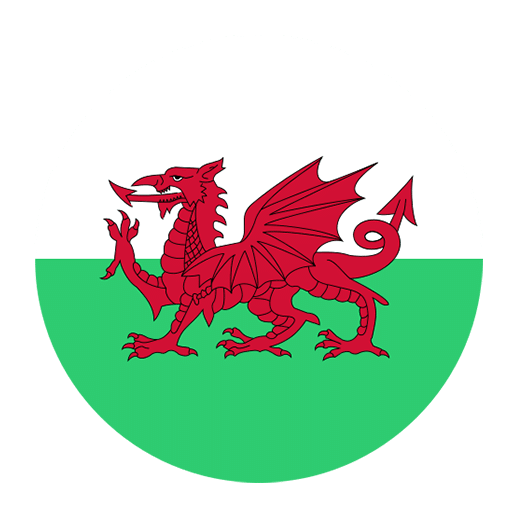Learning a new language is always an exciting venture, and Welsh is no exception. Whether you’re planning to visit Wales or simply want to expand your linguistic repertoire, understanding basic phrases for giving directions can be incredibly useful. In this article, we’ll delve into essential Welsh phrases and vocabulary that will help you navigate and give directions with ease. By the end of this guide, you’ll be more confident in your ability to communicate in Welsh when it comes to getting from point A to point B.
Essential Vocabulary
Before diving into specific phrases, it’s important to familiarize yourself with some basic vocabulary related to directions. Here are some essential words that will form the foundation of your directional phrases:
– Right: Dde (pronounced “thay”)
– Left: Chwith (pronounced “khweeth”)
– Straight: Symlaen (pronounced “sum-lain”)
– Back: Nôl (pronounced “nawl”)
– Road: Ffordd (pronounced “forth”)
– Street: Stryd (pronounced “streed”)
– Junction: Cyffordd (pronounced “kuf-forth”)
– Roundabout: Rhodfa (pronounced “rhod-va”)
– Traffic lights: Goleuadau traffig (pronounced “goll-eh-wah-dai traff-ig”)
– Near: Ger (pronounced “gair”)
– Far: Pell (pronounced “peh-ll”)
– Here: Yma (pronounced “uh-ma”)
– There: Yno (pronounced “uh-no”)
Basic Directional Phrases
Now that you have a grasp of the essential vocabulary, let’s move on to some basic phrases for giving directions. These phrases will help you provide clear and concise instructions.
– Turn right: Trowch i’r dde (pronounced “trohkh eer thay”)
– Turn left: Trowch i’r chwith (pronounced “trohkh eer khweeth”)
– Go straight: Ewch yn syth ymlaen (pronounced “eh-wkh un seeth um-lain”)
– Go back: Ewch yn ôl (pronounced “eh-wkh un awl”)
– At the junction: Wrth y gyffordd (pronounced “urth uh guf-forth”)
– At the roundabout: Wrth y rhodfa (pronounced “urth uh rhod-va”)
– At the traffic lights: Wrth y goleuadau traffig (pronounced “urth uh goll-eh-wah-dai traff-ig”)
– Continue straight: Parhewch yn syth ymlaen (pronounced “par-hey-wkh un seeth um-lain”)
Landmarks and Points of Interest
When giving directions, referencing landmarks and points of interest can be extremely helpful. Here are some common landmarks and related phrases:
– The post office: Y swyddfa bost (pronounced “uh swuth-va bost”)
– The bank: Y banc (pronounced “uh bank”)
– The church: Yr eglwys (pronounced “ur egg-loo-ees”)
– The school: Ysgol (pronounced “us-gol”)
– The park: Y parc (pronounced “uh park”)
– The hospital: Yr ysbyty (pronounced “ur us-butty”)
– The shop: Y siop (pronounced “uh shop”)
Sample phrases:
– The post office is near the bank: Mae’r swyddfa bost ger y banc (pronounced “myr swuth-va bost gair uh bank”)
– The church is on the left: Mae’r eglwys ar y chwith (pronounced “myr egg-loo-ees ar uh khweeth”)
– The school is straight ahead: Mae’r ysgol yn syth ymlaen (pronounced “myr us-gol un seeth um-lain”)
Complex Directions
For more complex directions, you may need to combine several phrases. Here are some examples of how to construct more intricate directions:
– Turn left at the traffic lights, then go straight until you reach the park: Trowch i’r chwith wrth y goleuadau traffig, yna ewch yn syth ymlaen nes cyrraedd y parc (pronounced “trohkh eer khweeth urth uh goll-eh-wah-dai traff-ig, uh-na eh-wkh un seeth um-lain ness kur-aith uh park”)
– Go straight, then turn right at the junction: Ewch yn syth ymlaen, yna trowch i’r dde wrth y gyffordd (pronounced “eh-wkh un seeth um-lain, uh-na trohkh eer thay urth uh guf-forth”)
– At the roundabout, take the second exit: Wrth y rhodfa, ewch allan yn yr ail allanfa (pronounced “urth uh rhod-va, eh-wkh ah-lan un ur ail ah-lan-va”)
Asking for Directions
Knowing how to ask for directions is just as important as giving them. Here are some useful phrases to help you inquire about directions:
– Excuse me, where is the post office?: Esgusodwch fi, ble mae’r swyddfa bost? (pronounced “es-guh-soh-dookh vee, blay myr swuth-va bost?”)
– How do I get to the hospital?: Sut mae cyrraedd yr ysbyty? (pronounced “sit my kur-aith ur us-butty?”)
– Can you help me find the bank?: Allwch chi fy helpu i ddod o hyd i’r banc? (pronounced “ah-lukh kh-ee vuh hel-pee ee dod oh heed eer bank?”)
– Is it far from here?: Ydy e’n bell o yma? (pronounced “uh-dee en bell oh uh-mah?”)
– Which way to the park?: Pa ffordd i’r parc? (pronounced “pah forth eer park?”)
Understanding Directions
When someone provides you with directions, it’s crucial to understand what they’re saying. Here are some common responses you might hear and how to interpret them:
– Go straight until you see the church: Ewch yn syth ymlaen nes i chi weld yr eglwys (pronounced “eh-wkh un seeth um-lain ness ee kh-ee weld ur egg-loo-ees”)
– Turn right after the traffic lights: Trowch i’r dde ar ôl y goleuadau traffig (pronounced “trohkh eer thay ar awl uh goll-eh-wah-dai traff-ig”)
– The bank is on your left: Mae’r banc ar y chwith i chi (pronounced “myr bank ar uh khweeth ee kh-ee”)
– The school is opposite the park: Mae’r ysgol gyferbyn â’r parc (pronounced “myr us-gol guh-ver-bin ar park”)
Practice Makes Perfect
Learning to give and understand directions in Welsh can be challenging, but practice makes perfect. Here are some tips to help you improve:
1. **Practice with a partner**: Find a language partner who is also learning Welsh or a native speaker who can help you practice giving and receiving directions.
2. **Use maps**: Practice giving directions using a map. This can help you visualize the directions and make the learning process more interactive.
3. **Listen to native speakers**: Watch videos or listen to audio recordings of native Welsh speakers giving directions. This can help you get accustomed to the pronunciation and speed of natural speech.
4. **Role-playing**: Role-playing different scenarios where you might need to give or ask for directions can be a fun and effective way to practice.
Real-life Application
Applying your new skills in real-life situations is the best way to solidify your learning. Here are some scenarios where you might need to use your directional phrases:
– **Traveling**: Whether you’re visiting a new city or exploring the countryside, knowing how to ask for and give directions can make your travels smoother and more enjoyable.
– **Meeting up with friends**: If you’re meeting friends in a new place, you might need to give them directions to find you or ask for directions to find them.
– **Navigating public transportation**: Understanding how to get to bus stops, train stations, or specific routes can be crucial when using public transportation.
Conclusion
Learning Welsh phrases for giving directions can greatly enhance your ability to navigate and communicate effectively in Welsh-speaking areas. By mastering essential vocabulary, basic phrases, and more complex directions, you’ll be well-equipped to give and understand directions with confidence. Remember to practice regularly, use real-life scenarios to apply your skills, and don’t be afraid to ask for help when needed. Pob lwc! (Good luck!)

